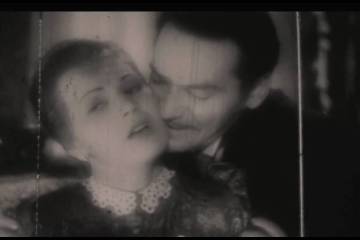What Distinguishes ‘Pan’s Labyrinth’ as Exceptional?
Guillermo del Toro’s Pan’s Labyrinth is a brilliant film that captivates audiences through its remarkable blend of narrative, visual artistry, and profound themes. Premiering in 2006, the movie unfolds in the somber setting of post-Civil War Spain during 1944, contrasting historical realism with a mesmerizing yet dark fantasy world. Several distinctive components set Pan’s Labyrinth apart from other films, both within its genre and across international cinema.
Innovative Storytelling Techniques
One of the most distinct features of Pan’s Labyrinth is its seamless fusion of genres. The film interlaces drama, historical fiction, fantasy, horror, and fairy tale motifs, creating a narrative tapestry that is both emotionally resonant and intellectually stimulating. This genre convergence allows both the mundane brutality of the Francoist regime and the escapist allure of myths to coexist and interact. The protagonist, Ofelia, traverses these dual realities—her coming-of-age journey entangles with a mythical quest, grounding the fantastical elements in psychological necessity rather than escapism for its own sake.
Symbolism and Mythological Connections
The film stands out in its sophisticated use of symbolism. Del Toro draws heavily from mythological archetypes and Spanish folklore, rendering his story deeply allegorical. For instance, the faun—an ambiguous figure who guides Ofelia—invokes classical myth precisely because it defies reduction to good or evil. The labyrinth itself is a recurring motif, symbolizing both the complexities of the human psyche and the winding journey toward self-discovery. The magical tasks Ofelia must perform parallel her real-life struggles, granting the narrative layers of meaning that encourage repeated viewing and scholarly analysis.
Breakthroughs in Visual and Aesthetic Design
Pan’s Labyrinth exemplifies Del Toro’s reputation as a visual storyteller. The set designs, costumes, and use of practical effects blend with CGI to create an immersive world that feels tangible despite its surrealism. Cinematographer Guillermo Navarro’s dark, saturated color palette reflects the merging of reality and fantasy, portraying both realms as equally vivid and menacing. Detailed production design—such as the menacing Pale Man’s lair or the textures of the labyrinth—contributes to a haunting atmosphere that lingers with the viewer.
Themes of Innocence, Violence, and Resistance
The narrative delves into broad themes with unwavering emotional transparency. Ofelia’s innocence sharply opposes the harsh brutality of her stepfather, Captain Vidal, a character based on an authoritarian model. Moments of intense violence are contrasted with magical aspects, heightening the emotional depth and emphasizing the theme of innocence lost. Further, the concept of resistance—both political and individual—highlights the dual capacity for corruption and redemption within human nature.
Sophisticated Approach to Fantasy
Unlike many fairy-tale-inspired films, Pan’s Labyrinth refuses to sanitize the darker aspects of its story. The fantasy realm is not a utopia; its rules are harsh, its denizens unpredictable. By refusing to draw clear lines between villainy and heroism within the magical world, the film treats young viewers as capable of grappling with ambiguity and moral complexity. This elevates the film beyond children’s fantasy, positioning it as a profound meditation on trauma, morality, and the necessity of imagination.
Cultural and Critical Influence
Upon its release, Pan’s Labyrinth received critical acclaim for its originality, earning three Academy Awards and over 100 international accolades. Its cultural resonance is evident in its enduring popularity: the imagery and themes have influenced literature, theatre, video games, and academic discourse. Scholars frequently cite the film as a case study in transnational cinema and magical realism; its approach to national trauma and memory continues to inform debates within film studies.
Guillermo del Toro’s Perspective and Filmmaking Decisions
Central to Pan’s Labyrinth is the distinctive vision of Guillermo del Toro. His profound admiration for creatures, legends, and the overlooked infuses each element of the movie. Del Toro directly illustrated the characters and managed their tangible creation, merging terror with a sense of poignant beauty. This involved technique leads to a universe where all, from the tiniest bug to the giant faun, holds symbolic significance and storytelling function.
Lasting Heritage
The distinctiveness of Pan’s Labyrinth lies in its capacity to function across several dimensions: it serves as a historical allegory, a fantastical journey, and a psychological depiction simultaneously. The movie’s steadfast commitment to visual splendor, heartfelt emotion, and intricate themes secures its position as a major work in modern cinema. By urging viewers to traverse the maze-like boundaries between reality and legend, the film enhances our comprehension of storytelling’s power to address, honor, and eventually rise above the genuine terrors of the past.




